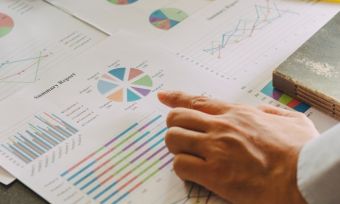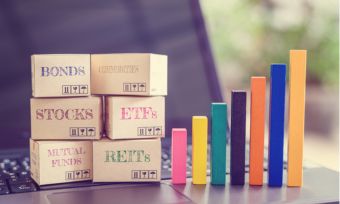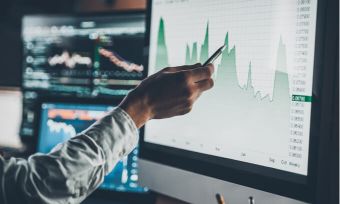Investing in 2017? What You Should Think About…

Marcel von Pfyffer & Neill Colledge, Directors of Arminius Capital, give insights into what 2017 may hold for investors.
The biggest factors which global investors need to watch in 2017 are China and President Trump.
China buys one third of Australia’s exports in order to create infrastructure projects and, to a lesser extent, manufactured goods – so any disruptions to the Chinese economy’s demand for commodities will impact Australia. These are potential disruptions that will occur due to China itself slowing down; but they are distinctly different to impacts upon China by President Trump, which are trade-related issues.
https://twitter.com/SkyBusiness/status/798747534210437120
If President Trump were to start a trade war with China, the consequences would certainly include a fall in the Renminbi Yuan (CNY) and slower growth in the Chinese economy. But ‘The Donald’ has already shown that his bark is worse than his bite, so any action he takes against China is likely to be symbolic rather than serious. He is well aware that the Chinese government might not only retaliate against US companies, but might also start selling its USD $2 trillion of US government debt.
The Australian Dollar
Global factors will continue to dominate Australia’s foreign exchange markets. Because of the trade relationship, overseas investors treat the Australian dollar (AUD) as a proxy for the Chinese Renminbi Yuan (CNY), which is still fixed daily by the Chinese government. Even without a trade war, Chinese GDP growth has been slowing since 2009 and will continue to slow, although official Chinese statistics may not reflect this fact. Therefore we expect that the AUD will continue to weaken in 2017, ending the year below USD $0.70.
Australian Interest Rates
Australian interest rates are expected to move up in response to the global rise in bond yields. In the last five months, bond yields in most developed economies have risen sharply in response to the growing belief that inflation is returning. The US 10-year bond hit a record low yield of 1.35% in July 2016 on the expectation that low inflation and slow growth – “secular stagnation” – were a permanent feature of the US economy. Trump’s spending plans, combined with recent US wage rises, suggest that higher inflation is just around the corner.
Australian bond yields have already begun to rise, and will keep on rising with the global tide. This rise will bring capital losses for Australian bondholders and higher funding costs for Australian banks.
Global interest rates could rise next year, yet local economists say domestic rates should fall. #9Finance https://t.co/TFI2GsQlGa
— 9Finance (@9Finance) November 29, 2016
Rising interest rates, however, are good news for savers. Term deposit rates have already begun to move up, and will be pushed higher by banks’ competition for deposits. The Reserve Bank is expected to lift official cash rates to 2.00% by mid-year.
Are rising interest rates bad for equities? Only for yield-sensitive equities like utilities and property trusts. The A-REITs (Australian real estate investment trusts) have already fallen an average of 15% since August, lifting the sector average yield to 6.5%. While the A-REITs remain attractive for income-oriented investors, most trusts are still some 15% above the value of the properties inside them, so there is little prospect for capital growth. The silver lining to this cloud is that the A-REIT sector is overdue for consolidation, which will enhance the 2017 returns to unit holders in the target trusts.
Australian Property Market
Direct property investors are at risk of modest capital losses. The resource-dependent economies of WA and Regional Queensland still face oversupply and weak demand for most types of property. The Sydney housing market remains tight, but oversupply in the Melbourne market will weaken prices by up to 5%. Office markets in Sydney and Melbourne are expensive but still under-supplied. Capitalisation rates for industrial property will stall in 2017, and may be pushed downward by rising bond yields.
Source: CoreLogic RP Data
Compare Home Loan Interest Rates
Australian Shares
The share prices of the Australian banks have improved because their 2017 full-year results were not as bad as feared, and because prospective global bank regulation won’t be as tough as feared. This means that bank dividends have been maintained and the banks’ need to raise more capital has receded. The sector’s problems have not gone away, however. All the bank CEOs have noted that the credit cycle is deteriorating, so dividend cuts may be on the agenda for 2017. We believe that the banks have 15% downside in 2017.
The net effect on the Australian share market is slightly positive. Banks and property trusts will weaken, resources will rise then fall, but cyclicals will improve overall. We expect the S&P/ASX200 to approach 6000 in the first half of 2017, but to close the year around 5800 with a 5% dividend yield.
Compare Online Share Trading Accounts
Global Shares
For stocks with cyclical businesses, especially those outside Australia, 2017 promises capital growth of 20% or more. President Trump’s agenda of deregulation, tax cuts, and infrastructure spending has already lifted forecasts for US growth and inflation, as well as propelling US domestically oriented stocks up by 10% or more in two weeks.
The recovery in the resources sector, by comparison, was unrelated to Trump. It began six months ago with better-than-expected Chinese growth, and was fuelled by specific Chinese policies aimed at achieving specific domestic objectives. We believe that these positive factors will disappear in the second half of 2017.
The outlook for US equities depends on how many of Trump’s expansionist policies he can persuade Congress to pass. While Trump can certainly get the consent of the Republican majority in Congress for deregulation of oil, gas, banks, and pharmaceuticals, he may struggle to win support for the higher budget deficits and more government borrowing, which are implicit in tax cuts and infrastructure spending. We expect that the honeymoon between Trump and the markets will continue through the first half of 2017.
Nonetheless, we expect that the US share market will outperform the Australian share market in 2017. The S&P/ASX200 index outperformed the US S&P500 during the resources boom, but since the GFC, the US share market has risen 177% and set new records, whereas the S&P/ASX200 is still 20% below its pre-GFC peak. A decisive factor for Australian investors is that the US dollar has been rising steadily since mid-2014 and is now at its highest level since 2003.
Emerging markets remain very risky. The resource oriented countries have enjoyed the same uplift as Australia from the commodity price upswing, but rising US bond yields are usually bad news for emerging markets, because money tends to flow back to the US. Add to that the possibility of a continually rising US dollar and the possibility that President Trump might start a trade war against someone small and unimportant. Australian investors should avoid emerging markets.
Any views or opinions expressed do not necessarily state or reflect those of Canstar. This advice is general and has not taken into account your objectives, financial situation, or needs. Consider whether this advice is right for you. Consider the product disclosure statement (PDS) of any investment before making a purchase decision. Canstar is an information provider and in giving you product information Canstar is not making any suggestion or recommendation to you about a particular product. Please ensure that you read the product disclosure statement to determine all the current options and inclusions for the product you are considering. For more information, see Canstar’s Financial Services and Credit Guide (FSCG) or read our detailed disclosure, important notes, and additional information.
Try our Managed Funds comparison tool to instantly compare Canstar expert rated options.







